| (insert your NIE or newspaper logo here) |
Weekly Online LessonOnline Lesson ArchiveGrade Level: 6-9
|
Moog's Musical Revolution
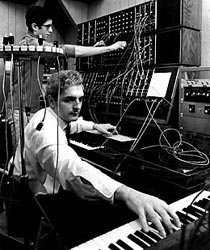 Last
week, musicians mourned the passing of a revolutionary - a man who was
instrumental in making much of our modern music possible.
Last
week, musicians mourned the passing of a revolutionary - a man who was
instrumental in making much of our modern music possible.
Robert Moog, who died on Sunday, August 21, 2005, was most well-known for creating the electronic music synthesizer that bears his name.
These synthesizers were designed to create a variety of sounds. For example, the keyboards can be programmed to mimic the sounds of a harp, clarinet, or any other musical instrument. They can also be programmed to play sound effects, like a slamming door or a chirping bird.
During the 1960s and 1970s, these versatile instruments opened up new possibilities in the modern music industry, as rock bands and other artists experimented with fresh sounds and new types of compositions.
Inspired by earlier inventors, Moog (which rhymes with vogue) began developing synthesizers in the 1950s. Although his first designs were large and mostly suitable for studio work, musician demand for them spurred improvements over the next decade. Later modules were much more compact, making on-stage use easy, revolutionizing live music performance.
Along with these versatile instruments came new technologies for editing and recording music. These have allowed musicians to layer tracks, producing richer compositions. Consumers have benefited not only by having more varieties of music to choose from, but also in making songs more portable.
From rock to country, punk to hip hop and beyond, there's no doubt that the evolution of making, recording and listening to electronic music will continue. So this week, you'll explore the history of these technologies that have intrigued and inspired musicians and scientists for decades.
Making Music
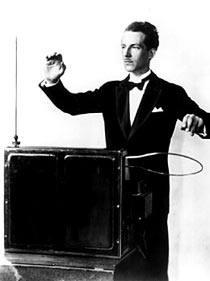 Your
first stop is the Electronic Music Foundation's Big
Timeline.
Your
first stop is the Electronic Music Foundation's Big
Timeline.
Begin your historical journey in the 1900s, starting with l906 to see the Telharmonium.
Continue through the decade and learn about the dismal review of the Intonarumori in 1913 and the success of the Theremin, which debuted in 1920.
Make sure to listen to The Swan, performed by Clara Rockmore using the Theremin in 1937. Would you have guessed that the song was made electronically, rather than by a human voice, if you didn't know beforehand?
Keep moving along through the early years of electronic music experiments, including the Ballet Mecanique in 1927, as well as the Ondes Martenot and Trautonium built in 1928.
How would you describe how the mechanical parts, work in conjunction with the electronic parts and human creativity?
Next you'll discover that the Hammond Organ was the first electronic instrument sold on a commercial scale beginning in 1935.
Further experimentation with different kinds of sound for musical compositions continued, as Imaginary Landscape #1 of 1939 illustrates.
In the 1950s, you'll learn about Musique Concrete and hear the composition called, A Railroad Study. You'll also find out about the historical MoMA Concert in 1952 and the birth of a revolutionary electronic music studio in 1953,
In what ways do the making and recording of this type of music and song go hand-in-hand?
Innovations and uses for these technologies continued, like the development of the Electronic Sackbut, as well as the use of electronic music for films like Forbidden Planet.
In the mid-1950s, computers began playing bigger roles in music productions, such as the Illiac Suite in 1957 and the RCA Mark II in 1959.
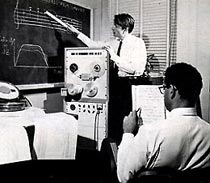 As
these technologies evolved, so did the public's acceptance of non-traditional
music and artistic performance, as illustrated by the presentation of
Poeme
Electronique at the World's Fair in 1958.
As
these technologies evolved, so did the public's acceptance of non-traditional
music and artistic performance, as illustrated by the presentation of
Poeme
Electronique at the World's Fair in 1958.
In the 1960s, computers and synthesizers truly enlarged the musical world - they could do more things than their predecessors and these technologies became more affordable.
As you'll soon discover, Bell Labs was the first to produce a digital reproduction of a brass instrument. They also synthesized a voice singing the lyrics of A Bicycle Built for Two!
How does that composition compare with The Swan of 1937 and the Poeme Electronique of 1958?
The quest for smaller, performance-sized synthesizers continued with the production of the Synket and the revolutionary Moog Synthesizer.
Versatility of the instrument was also sought after. This led to the Buchla Synthesizer in 1965, the Groove in 1968, and the VCS-3 in 1969.
In turn, these developments influenced the new styles of music performance, like the Music for a Solo Performer, Variations V, the Hornpipe concert, and the collaboration called HPSCHD, one of the first true multimedia experiences in the world.
In the 1970s, you'll discover how quickly programmable computer systems developed from analog mode to digital mode. You'll also learn how the placement of loudspeakers influenced performance pieces.
How do the workings of the CEMS System compare to the Synthi 100 and the SalMar Construction? How does the particular placement of loudspeakers affect a person's musical experience in the Acousmonium and the Rainforest exhibit?
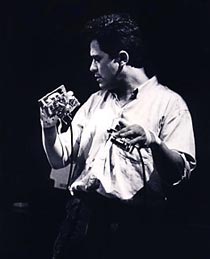 Like
the early Moog Synthesizer, the Synclavier
also became a huge commercial success. In what ways was the design more
user friendly than previous constructions?
Like
the early Moog Synthesizer, the Synclavier
also became a huge commercial success. In what ways was the design more
user friendly than previous constructions?
During the 1980s, music progressively became a personal experience - and it also became more and more accessible to the masses.
The Emulator could sample then play any sound it could record, and the high use of digital music led to the designation of MIDI as the industry standard in 1983. That same year, the Yamaha DX-7 became the first commercially successful MIDI synthesizer.
Music and computers became even more tightly linked with innovations like the Music Mouse, Voyager, and M.
And, as always, technological advances inspired musical creativity.
Examples include, A Walk Through the City, Private Lives, The Hands, and After Some Songs.
How exactly did new technologies allow for these new types of composition and performance?
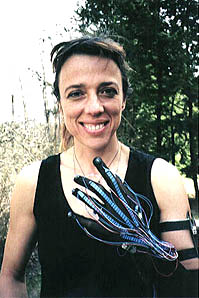 As
you'll discover in the 1990s,
the innovative trends seen in the 1980s continued to blossom with the
production of easy-to-use instruments like Thunder,
the Multiple-Touch-Sensitive
Keyboard, and the Lady's
Glove.
As
you'll discover in the 1990s,
the innovative trends seen in the 1980s continued to blossom with the
production of easy-to-use instruments like Thunder,
the Multiple-Touch-Sensitive
Keyboard, and the Lady's
Glove.
The 1990s also witnessed the dawning of the World Wide Web. This new medium provided a fresh field for musical expression, as illustrated by Cathedral, one of the first interactive, online compositions.
These innovations opened up an even larger world to musicians and other artists, as interactivity and the melding of different cultures and traditions became the new rage in progressive musical media in the 21st Century.
In what ways have these latest innovations built upon those of earlier instruments and creative talents? In what ways do they reflect the lives and times of our modern world?
Hear That?
As you've discovered, recording sound has been instrumental in the development of electronic music technologies. Therefore, it's only fitting to also review A Brief History of Recorded Sound, hosted by the Electronic Music Project.
Read the introduction about the Essentials of Home Recording, then Launch Timeline, which will open the interactive in a new window.
Begin with the advent of Microphones, and move into the 1920s to learn how Electrical Processes were used. In what ways did these two inventions make music more widely available to the public?
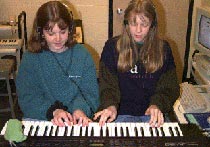 In
the 1940s, music became recorded on Reel-to-Reel and Magnetic
Tape was a vital component of this new music recording - and listening
- era.
In
the 1940s, music became recorded on Reel-to-Reel and Magnetic
Tape was a vital component of this new music recording - and listening
- era.
Multi-Track Recording and Mixing added to the complexity of recorded music, as well as its refinement.
As you reviewed earlier, Synthesizers were a huge influence in music and society beginning in the 1960s. Later, in the 1970s, equipment for Home Studios became more accessible.
In subsequent decades, Digital Recording , MIDI standards, and Personal Computers further advanced how music can be captured, edited and replayed.
Do you use any electronic devices that produce, record or play music? If so, how would you compare those with how musicians and consumers produced, recorded and played music a decade ago? How about 20 or 30 years ago?
Newspaper Activities
In current issues of The Salt Lake Tribune, look for news stories or features about innovations in music or use of electronics in music. Topics can relate to how music is produced, performed live, recorded, repalyed, or mixed with other media like video, photos, or interactive components. If designers or musicians are being recognized for their work, what exactly makes their productions notable? In what ways is their work based on that of their predecessors? How much of it is based in technology, and how much is based on personal creativity? In what ways might new innovations in electronic music affect your own life? Will these advances influence our society as a whole?
© Copyright 2005
Learners Online, Inc.
